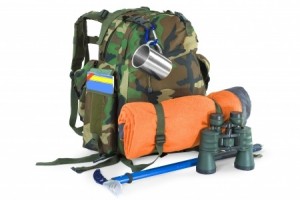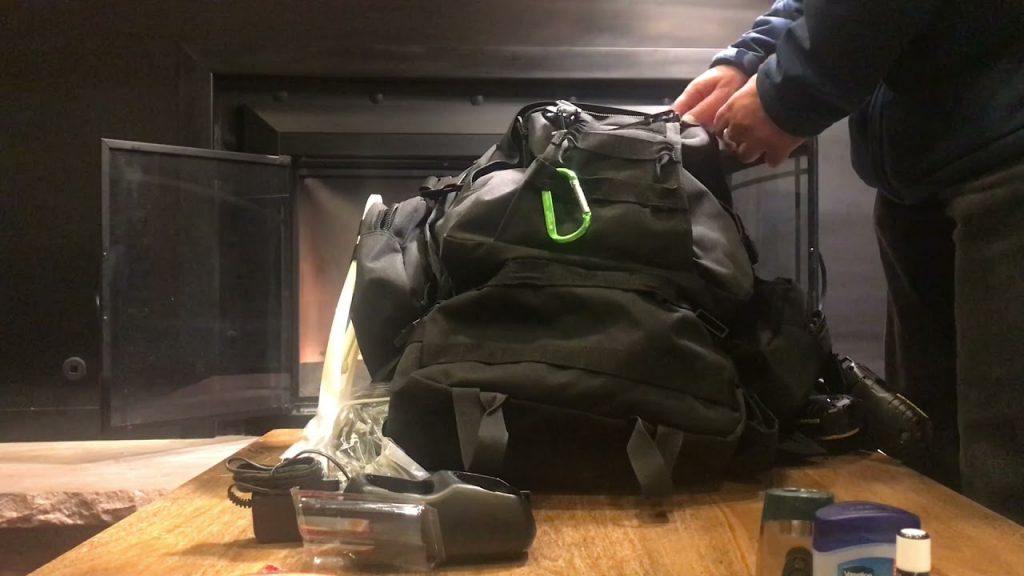Bug Out Bag Kit – Basic Prerequisite for Survival
Are you a survival newbie? If so, you are probably just getting acquainted with the basics. A bug-out bag will be one of the prerequisites for survival under all kinds of emergency conditions. Learning what it is and how to use the bug out bag for survival will be essential.
Bug Out Bag Contents Overview
Contents
This portable and easy to carry kit contains all of the essentials for human survival over a period of 72 hours. The bug out bag is not designed to ensure long-term survival.
It simply delivers the resources that will be needed for evacuation or until a person gets discovered and rescued. The content of the bag varies and each survivalist has a particular approach.
There are, however, some essential items that will need to find their way into the kit. Some of the most important item categories to include in the bug out bag include water and food, warm clothes, shelter gear, a medical kit, basic survival gear, and items that will be needed for protection or hunting.
Bug Out Bag Kit – Tips for Putting a Bug Out Bag Together
Creating your bug out bag will be exciting but the task could also get to be overwhelming. Understanding the essential categories and the most crucial items in each will simplify the task and help you control the number of items to include in the kit.
Start by choosing a high-quality outdoor bag or backpack. It should be waterproof and large enough to accommodate the survival gear.
At the same time, you will have to make sure that you will be comfortable carrying the weight of the survival kit. A backpack that is suitable for outdoor purposes should come in natural colors. Avoid anything that is overly bright and colorful. Purchase a basic medical kit. This is the first component of the bug-out bag.
Additionally, you should prepare a bag containing some essential clothing items like warm socks, underwear, t-shirts, and at least one jacket. The basic survival gear you will need could include the following: matches in plastic wrap, a flashlight, rain gear, cooking equipment, and a survival knife.
You can also include maps, survival literature, bedding items, blankets, batteries, a crank-operated radio, and a fully-charged mobile phone. A machete, parachute cord, a small hammer, and a portable shovel, some kind of weapon, water, and non-perishable food items will make your bug-out bag complete.
Several Other Tips and Suggestions
It seems like a bug-out bag should contain a large number of essential items. Remember that its aim is different from guaranteeing long-term survival. Pick the things that you will need to move around, evacuate yourself, or find emergency assistance.
Keep it simple! The items in the bag should guarantee your self-sufficiency. Avoid gear and equipment that will work alongside other items you might be missing.
The bug-out bag will help you in the case of natural disasters, terrorism, an outdoor emergency, or another type of emergency. Order and limiting yourself when making purchases will increase usability. Double-check everything and make sure that all of the items in the bug-out bag are functional and damage-free.
You never know when you might be needing the survival gear. Keeping everything in good condition will increase your chances of success significantly.
Survival Pack – Your Emergency Life In a Bag
What is a survival pack, or bug-out bag as some people like to call it? This is basically your emergency life in a bag, and while it sounds pretty simple, it isn’t. These survival packs are supposed to contain everything you will need for your family’s survival, whether it be in the case of an emergency, or surviving after a great change in the world.
 This can mean anything from total economic collapse, some worldwide natural catastrophe, or even the zombie apocalypse.
This can mean anything from total economic collapse, some worldwide natural catastrophe, or even the zombie apocalypse.
There are some relevant items that every bag should have, other survival supplies really depend on you and your family’s needs are. Everyone says that you need survival food and water for 72 hours or more. While this is true, what happens after that?
Unless you get rescued in three days or less, you are going to have to figure out how to find more. If you are on the run, you have to realize that many water sources may be contaminated in some way or another. You need to have some kind of water purification system that you can carry around with you.
You can start with iodine tinctures or purification tablets, but eventually, these supplies will run out.. One of the sure-fire methods for purifying water of most contaminants is heat. You have to boil water for at least five minutes before drinking.
So you also need some way to start a fire when it comes to your survival pack. Sure you may want to pack waterproof matches, a lighter, but again, what happens if you run out? You need some good fire-starting tools, something inexpensive but reliable.
A good urban survival firestarter to have in your pack is a simple 9-volt battery and some steel wool. Cut off a little steel wool, place it in some kindling. Touch both terminals of the battery to the steel wool, instant fire. Just be careful not to burn yourself.
You need a good hunting knife, one with a sharp, solid blade and a good sheath as part of the survival pack. You also need at least 100 feet of parachute cord. This cord has numerous uses. Good cording contains five to seven strands. These can be used for creating shelter, help with fire starting, tying your knife to a stick for a weapon, and these are just a few ideas for your pack.
You also need a tarp of some kind, as well as a protective covering against the elements. Another important piece of equipment to include is a basic survival guide, one that includes fire starting techniques, emergency shelter building, and how to hunt and trap your own food.
You can find an abundance of information on what to put in a survival pack online. There are literally hundreds of different websites, and even more retailers that offer pre-packaged kits, or everything you need to put together your own. The most important thing you can pack is common sense.
Don’t wait until the last minute to prepare. You should also practice your fire starting techniques, emergency shelters, and hunting trips at least once a month.
Go out into the woods, set up your own shelter, build your own fire, and set traps, just to keep in tune with these techniques.

